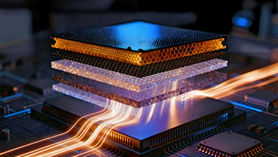Underestimating fuel-free technologies will harm energy development
- https://oko-planet.su
- Apr 17
- 4 min read

In a situation where the carbon footprint of electricity production needs to be reduced and a mass transition to electric transport is possible, the energy industry faces complex challenges associated with the transformation of the energy system of any country.
We live in the real world and it is important to realize that the existing centralized power supply system and the people who work in it can only be ready for change and innovation within the framework of this centralized power supply system. A similar situation is observed in Russia, where the installation of solar panels on roofs of houses has not become widespread. This is due to the climate and the small number of sunny days per year in most regions.
As follows from the statements of senior officials, the construction of nuclear power plants in various regions of Russia will become a priority. In May 2024, Russian President Vladimir Putin noted that by 2045, nuclear generation in the country's energy balance could reach 25% (currently this figure is 20%).
Moreover, the construction of nuclear power generation will develop, including, due to medium and low-power units. In particular, it is planned to build five NPPs of different capacities in the Far East and Primorye. According to preliminary data, one of the new stations will be the Khabarovsk NPP, where it is planned to install 2 VVER-S/600 reactors
The draft general scheme for the placement of power facilities throughout the country until 2042, published for public discussion, plans to build five NPPs of different capacities in the Far East and Primorye. According to preliminary data, one of the new stations will be the Khabarovsk NPP. According to the design information, the installed capacity of the station will reach 1.2 GW (consists of two VVER-S/600 reactors). Partial commissioning is scheduled for 2036 (https://www.atomic-energy.ru/news/2024/10/02/149868). However, the question arises about the cost of building small and medium-sized nuclear power plants, which, like large units, require security and maintenance. It is safe to assume that the selling price per 1 kW*h will be significantly higher than that of stations with VVER-1000/1200 reactors. In addition, the prospect of building such facilities in 2036-2042 in the context of the rapid emergence of new fuel-free power generation technologies raises doubts in principle about the feasibility of building small and medium-sized nuclear power plants. For example, Neutrino Energy Group is currently actively concluding contracts for the supply of Neutrino Power Cubes graphene generators with a rated power of 5-6 kW. The company's president, Holger Thorsten Schubart, notes the high demand for these devices. Official sales of Neutrino Power Cubes will begin in early 2025, but most contracts have already been concluded for 2025-2026. The minimum purchase lot is 10,000 units, which is equivalent to 50-60 MW of installed capacity. In fact, this corresponds to the capacity of a small nuclear power plant, but unlike it:
The graphene power source does not require security and operating costs.
The overall dimensions of the Neutrino Power Cube are 80x50x100 cm.
The warranty period is 20 years.
It has connectors for connecting equipment with alternating current - ~380/220/48/24 V (AC), and direct current -48/24 V (DC).
Power generation is carried out in the basic mode 24/7/365.
Silent operation. No rotating parts.
Autonomous fuel-free power generation that does not require connection to public grids.

Operating conditions:
To achieve maximum performance, the Neutrino Power Cube should be installed indoors (in the basement) at a temperature of 18°C or higher.
It is placed close to the point of load consumption, which eliminates losses in the power grid.
According to Holger Thorsten Schubart, Neutrino Power Cubes are of greatest interest to consumers from countries where electricity costs are particularly high.
However, one should not hope that electricity prices in Russia will remain low in the long term. In 2024, Russia has already faced a shortage of generating capacity in the south of the country. The Russian energy system is threatened by a capacity deficit, which can only be overcome through colossal investments of 38 trillion rubles, Sberbank said (https://topcor.ru/51961-nad-rossiej-navisla-ugroza-jenergodeficita-sberbank.html). Moreover, according to the First Deputy Chairman of the Board of Sberbank Alexander Vedyakhin at the session of the international forum "Russian Energy Week", in the next 18 years it is necessary to invest 25 trillion rubles in generation and 1.3 trillion in networks in the areas of thermal power plants, nuclear power plants, renewable energy sources and hydroelectric power plants.
These investments will have to be paid for by consumers, which means that electricity prices will rise. Graphene sources are superior in reliability and ease of operation to all known electricity generation technologies, fully justifying the phrase - the simpler, the better. Therefore, graphene electricity generation, given its adaptation for electric transport, has excellent prospects.
Graphene technologies are especially well suited for the climatic conditions of Russia, given the vast territory of our country. One of the Russian companies has already acquired a license for the industrial production of graphene electricity sources in Russia, and the main task today is to start their production.





















































Comments